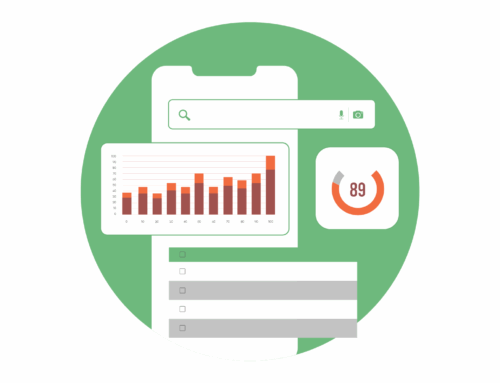If you want to redirect a web page or your entire website, you’ll have two redirect options: 301 and 302 redirect.
While both of these redirects do the same job, they still have a huge difference.
If you use any of these redirects without knowing the difference between them, you might harm your SEO performance negatively. If you want to redirect a web page or your entire website, you’ll have two redirect options: 301 and 302 redirect.
While both of these redirects do the same job, they still have a huge difference.
If you use any of these redirects without knowing the difference between them, you might harm your SEO performance negatively.
Each redirect has a specific purpose and impact on SEO. That’s why you should always use them wisely.
Sounds confusing?
Don’t worry.
We’re here for the rescue.
In this post, we’ll explore the difference between 301 vs 302 redirect and figure out which one is better for SEO.
So without wasting any further time, let’s dive in.
Table of Contents
What is 301 Redirect?
301 redirect is basically a permanent HTTPS response code that provides indications to search engines that the web page has been moved permanently to a different URL address.
This means anyone who visits the old URL will be redirected to the new URL automatically.
Since this will be a permanent move, you can’t change it afterward.
Also, 301 redirect passes all the SEO juice and authority from the old URL to the new web page or website.
Most people use 301 redirects when they rebrand their websites or completely delete the old web page.
What is 302 Redirect?
On the flip side, the 302 redirect is a temporary HTTPS response code that tells search engines that the web page has been moved to a brand new URL temporarily.
People use this type of redirect when they want to send users to a different URL for a short period of time instead of sending them permanently.
If you want to resign your website, or if your website is undergoing maintenance, you can use 302 redirects.
When Should You Use 301 Redirect?
As we’ve discussed earlier, the 301 redirect is a permanent redirect that sends users from the old URL to the new one.
It’s typically used when someone rebrands their website, permanently deletes the webpage, or when two websites are merged together.
You can use 301 Redirect in the following cases:
- If you try to change the URL structure of your website, you would have to use 301 redirects so that your website doesn’t have any negative impact on SEO. However, if your website is already quite old and getting a good amount of traffic from Google, we wouldn’t even recommend changing the URL structure since it will impact your SEO performance even if you use the 301 redirects.
- If you want to rebrand your website and change the domain name, you would have to use 301 redirects so that you can get all the SEO authority from the previous domain to the new one.
- If you have multiple duplicate pages on your website that are targeting the same or similar keyword, you should consolidate them into a single page. And you can 301 redirect the rest of the URLs.
- If you merge two different websites or move content from one website to another, you should use 301 redirects to tell search engines and users that the content has been moved to a new location.
When Should You Use 302 Redirect?
302 Redirect is a temporary redirect that sends users and search engines to a different URL temporarily.
You can use 302 redirects in the following cases:
- If your website is undergoing maintenance or if you’re solving some issues in the backend, you can use 302 redirects to send users to a different web page. And once your website maintenance is done, you can remove the 302 redirects.
- If you want to A/B split test your pages to see how your copywriting, design, or a specific website functionality is working, you can use 302 redirects.
- If you’re testing out new pages, you can 302 redirect your visitors to a different page so that the user experience and SEO performance are not harmed.
301 vs 302 Redirect: Which One Should You Use For Better Search Ranking?
301 and 302 redirects have a huge impact on search engine ranking.
That’s why picking up the right one to use is super critical if you don’t want to harm your SEO performance.
Both of these redirects almost function similarly from a user’s point of view.
But search engine like Google uses both of these redirects for different purposes.
When you use 301 redirects, Google removes the older link from their search index and transfers all the link juice to the new one.
However, the transactions won’t be too fast as it might take some time for Google to pick up the changes and work on them (especially if you have a bigger website with plenty of redirects).
On the other hand, 302 redirect is kind of the opposite of 301 redirects.
When you use 302 redirects, Google doesn’t deindex the older URL or pass any link juice to the new one.
Your old URL stays intact in terms of SEO value, and mostly you don’t see any negative impact on your SEO performance.
However, most of the time, people mistakenly use the wrong redirection for the wrong purpose, which severely impacts their SEO.
And sadly, if you make an error with redirection, it will require some time to return to the same position again.
So think carefully before you use any redirect on your website. You can even use this content as a reference before you redirect any of your web pages.
Do 301 Redirects Hurt SEO?
No, 301 redirects don’t hurt SEO performance.
In fact, 301 is beneficial for SEO.
It may not directly increase your website traffic and show up your website at the top of Google search, but implementing it will ensure that search engine crawlers are correctly directed to the specific web page that you want them to visit.
And it also passes all the link juice from your previous web page or website to the new one, which gives an initial SEO boost to your brand-new website or web page.
Can Using The Wrong Type of Redirect Hurt My SEO?
Yes, using the wrong type of redirect can massively hurt your SEO.
If you use 302 redirects for a web page that permanently has been moved instead of using 301 redirects, Google won’t deindex the old URL, and link juice won’t get passed to your new URL from the old one.
This means your new web page won’t rank higher on Google, resulting in a significant loss of free, organic traffic.
Is it Possible to Change From a 301 Redirect to a 302 Redirect or Vice Versa?
Yes, you can change from a 301 redirect to a 302 redirect by simply modifying the HTTPS code in the redirect configuration.
However, if you’ve already made the mistake of using the wrong redirect option, changing the redirect code will hardly make any difference.
Can I Use Both 301 And 302 Redirects On My Website?
Yes, you can use both 301 and 302 redirect on your website.
But you have to be extra careful to use the correct redirect code for the proper purpose.
However, make sure you’re not using two different types of redirection on a single web page together, as it will confuse the search engine and will make the situation even worse.
Conclusion
We hope now you have a clear understanding of the difference between 301 vs 302 redirect.
301 and 302 redirects both are critical for SEO, but you have to use the right one correctly.
If you use the wrong redirect for the wrong purpose, it will hurt your SEO too severely.
That’s why while choosing the redirect type, you have to be extra careful.
In short:
302 redirects are great if you want to move a page permanently, or if you want to redirect a page temporarily, you can use the 301 redirects.
Each redirect has a specific purpose and impact on SEO. That’s why you should always use them wisely.
Sounds confusing?
Don’t worry.
We’re here for the rescue.
In this post, we’ll explore the difference between 301 vs 302 redirect and figure out which one is better for SEO.
So without wasting any further time, let’s dive in.




